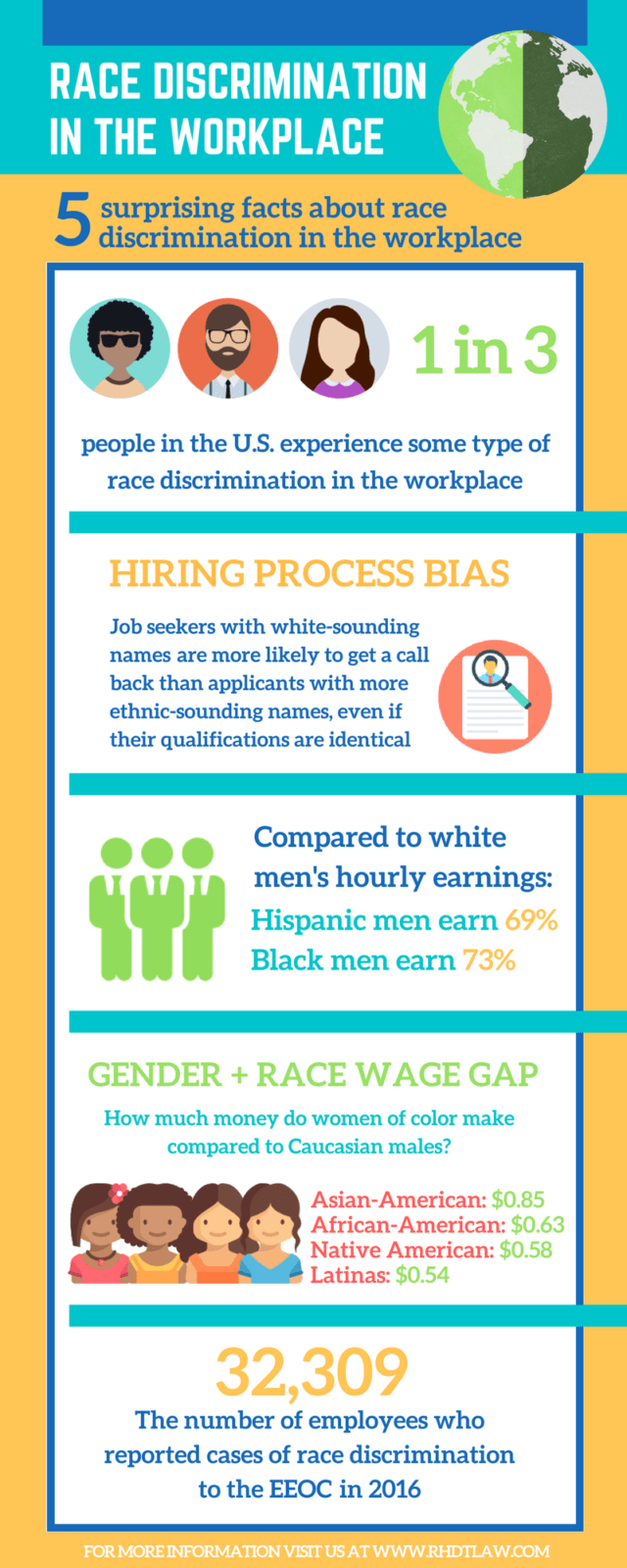San Francisco Race Discrimination Attorney
What is Race Discrimination?
Race discrimination in the workplace involves treating an individual job applicant or employee differently because he or she is of a certain race, or because the individual has personal characteristics that are associated with a racial background (including race-linked diseases, cultural characteristics linked to race, or physical characteristics associated with race, such as skin complexion, hair texture or facial features).
Racial discrimination is a violation of both federal and state laws. Title VII of the Civil Rights Act of 1964 makes it illegal to discriminate against someone on the basis of race, color, religion, national origin, or sex and to retaliate against a person who is involved in raising a discrimination claim against an employer. California’s Fair Employment and Housing Act (FEHA) prohibits employment discrimination on the basis of many individual factors, including race, as well as retaliation for filing a complaint, testifying, or assisting in proceedings related to practices forbidden by the Act.
Claims of race and color discrimination in the workplace fall into a few broad categories.
A Closer Look
Unfortunately even with protective laws in place, employees are still treated differently due to their race. In fact, the U.S. Equal Employment Opportunity Commission (EEOC) reported it received 91,503 charges of discrimination in the workplace in 2016, with 35% of those being race discrimination claims alone. Race discrimination comes in at number two on the most frequently filed EEOC claims list behind retaliation charges. Let’s take a closer look at the statistics surrounding this type of race discrimination in the workplace.

Do I Have A Racial Discrimination Claim?
To prevail in a race discrimination case, the employee must show that the employer took an “adverse employment action” against the employee which was motivated by discrimination. Examples of this include:
- Firing, wrongful dismissal, or constructive discharge
- Demotion, transfer, or unfavorable job assignment
- Reduction in pay
- Failure to interview or hire
- Denying promotion or advancement
- Any other employment decision that materially affects the terms and conditions of employment
How Do You Know if You are Being Racially Harassed?
The following types of verbal or physical conduct can constitute harassment:
- Offensive jokes, slurs, epithets, or name calling based on race or color
- Verbal or written mockery, insults or put-downs based on race or color
- The presence of offensive objects, pictures, or graffiti in the workplace
- Physical assaults, or threats of assault due to one’s race or color
Who Is Liable for Racial Discrimination?
Under California law, an employer is liable when a manager or supervisor engages in race discrimination. Where a co-worker engages in racial harassment, the employer is liable if it knew or should have known about the instances of discrimination and failed to take appropriate corrective action.
In addition, employers are liable for harassment by their customers or clients if they know or should have known about the harassment and fail to take action, regardless of the importance of the customer or client to the employer’s business.
Case Example
In Chuang v. Univ. of Cal. Davis, Bd. of Trustees, an assistant professor of pharmacology and assistant research pharmacologist, both of Chinese origin, brought an action against UC Davis alleging discrimination based on race and national origin. 225 F.3d 1115 (9th Cir. 2000). There, a member of the Executive Committee, a decision making body for the School Medicine, stated that “‘two Chinks in the pharmacology department were ‘more than enough’” and in response, the Dean of the School of Medicine laughed. Id. at 1128. Even though this remark occurred during the consideration of a different Asian-American’s potential employment, the Ninth Circuit held that this statement was “‘an egregious and bigoted insult … that constitutes strong evidence of discriminatory animus on the basis of national origin.’” Id. The Dean’s laughing response also established discriminatory intent on his part. Id. Thus, both the comments and actions of decision makers may constitute direct evidence of discrimination.

